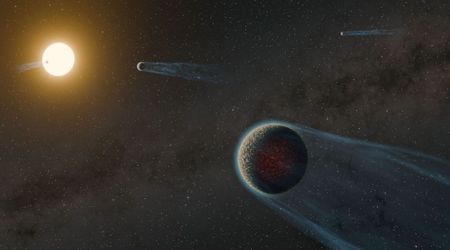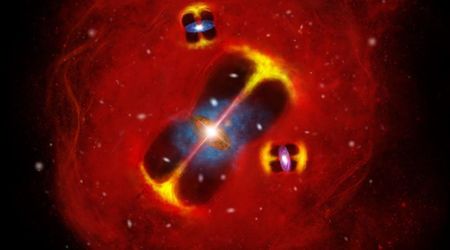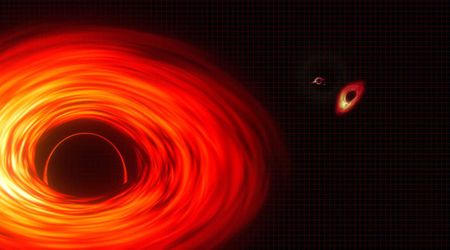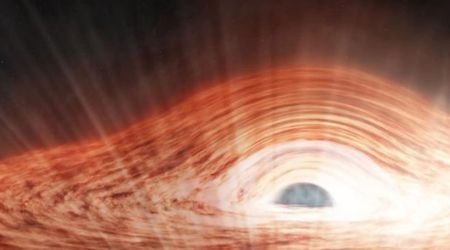New photos of the first black hole ever imaged reveal jaw-dropping twist in its behavior: 'Totally unexpected'

New findings from the Event Horizon Telescope (EHT) collaboration have revealed a surprising change in the supermassive black hole at the center of the M87 galaxy. For the first time, scientists have documented a significant shift in the magnetic field structure near the event horizon of the black hole, and it has pushed them to refine their understanding of how matter and energy behave in these extreme cosmic environments, as per the press release shared by EHT.
Groundbreaking new image! The EHT reveals the dynamic environment around black hole M87*.
— Event Horizon 'Scope (@ehtelescope) September 16, 2025
The 2021 image shows a distinct shift in polarization patterns, tracing changes in magnetic fields near the event horizon.https://t.co/LeX8z75PUI pic.twitter.com/ZjLwi8zVj0
This behemoth, located approximately 55 million light-years from Earth, is a supermassive black hole with a mass more than six billion times that of our Sun. The new observations, published in Astronomy & Astrophysics, are the result of comparing EHT data on M87* collected in 2017, 2018, and 2021. While the black hole's iconic shadowy ring remained constant in size, as predicted by Einstein's theory of relativity, the surrounding magnetic field showed an unexpected kind of behavior. The polarization pattern of the light, which indicates the direction of the magnetic fields, was found to have reversed direction over time.

“The fact that the polarization pattern flipped direction from 2017 to 2021 was totally unexpected,” said Jongho Park, an astronomer at Kyunghee University and a collaborator on the project. “It challenges our models and shows there’s much we still don’t understand near the event horizon.”
The new image of M87* just released today comes to life in this stunning animation, revealing its incredible evolution over the years!
— Event Horizon 'Scope (@ehtelescope) September 16, 2025
Watch closely and see how this mysterious supermassive black hole changes over time.
Credit: EHT Collaboration | Animation: Saurabh (MPIfR) pic.twitter.com/6idDPdnW9h
This surprising "cosmic twist" suggests the plasma orbiting the black hole is a chaotic, turbulent environment. “This tells us that the magnetized plasma swirling near the event horizon is far from static; it’s dynamic and complex, pushing our theoretical models to the limit,” said Paul Tiede, an astronomer at the Center for Astrophysics by Harvard & Smithsonian, and a co-lead of the new study. The discovery highlights the crucial role magnetic fields play in both pulling matter into the black hole and launching powerful jets of energy from it.
Additionally, the EHT captured the first direct signatures of the M87 black hole's powerful jet at its very base, connecting it to the swirling ring of superheated gas. This groundbreaking detail was made possible by new telescopes added to the global network, which boosted the EHT's sensitivity and imaging capabilities. These new results demonstrate how the EHT is evolving into a long-term observatory, providing not just snapshots, but a dynamic, unfolding picture of the universe's most extreme phenomena. The unexpected findings will give scientists new questions to explore for years to come.

In a different research, new computer simulations of the supermassive black hole at the center of the M87 galaxy have unveiled surprising details about the particles swirling just outside its event horizon. The research, which models the complex interplay of plasma, magnetic fields, and gravity, is challenging long-held assumptions about electron temperatures in this extreme cosmic neighborhood. A research team, also part of the Event Horizon Telescope (EHT) Collaboration, used advanced supercomputer models to study the fiery matter surrounding the black hole, first famously imaged in 2019. The EHT, a global network of telescopes, captures radio signals from the black hole's "shadow" and the glowing ring of hot electrons around it. These electrons produce synchrotron radiation as they spiral around magnetic field lines.
More on Starlust
Simulations expose unexpected electron temperatures around M87 black hole's event horizon
'Infant' universe had magnetic fields weaker than your typical toy magnet, study reveals









